08-13-Daily AI News Daily
AI News Daily 2025/8/13
AI News|Daily Briefing|Web Data Aggregation|Frontier Science Exploration|Industry Voices|Open Source Innovation|AI and Human Future| Visit Web Version↗️
Today’s Digest
V0, an AI platform, has evolved into a full-stack development tool. Claude now features a memory function, allowing it to reference historical conversations.
NVIDIA has released a physics-based AI model to empower robots. Jan-v1, a local model, demonstrates impressive performance.
GitHub faces a major industry shift, as it's been integrated into Microsoft's AI department, marking the end of its independent operations.
Regarding security, ChatGPT has revealed a zero-click attack vulnerability, while militarized AI sparks ethical concerns.
Scientists are deploying innovative applications, using a disguised robot Tibetan antelope for close-up wildlife research.Product & Feature Updates
V0, Vercel’s platform, has magically transformed from a mere frontend whiz into a full-stack architect overnight! 🔥 It’s not just churning out pretty interfaces anymore; it can now handle backend logic, database integrations, and even marketing copy, turning a simple natural language prompt into a complete app. Boasting built-in security that’s already blocked over 17,000 unsafe deployments, V0 is setting an absurdly high new bar for “ambient coding.” Click to learn about the latest developments - (AI News).
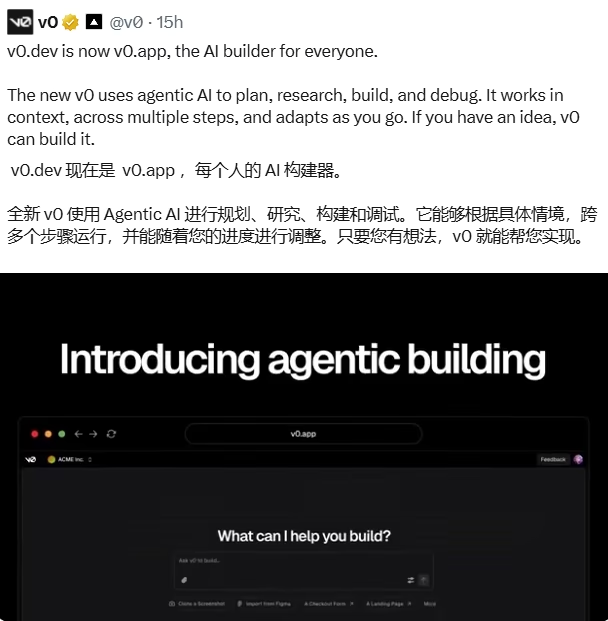
MiniMax has dropped the brand-new Agent Remix Marketplace, turning AI creation into an epic DJ remix show! 🎶 Tired of building AI agents from scratch? This innovative platform lets anyone “remix” existing, seasoned AI agents, and original creators even earn royalties. Check out this featured introduction - (AI News) for the full scoop. To spark that creative fire, they’ve even set up a whopping $150,000 total prize pool, aiming to build a fresh ecosystem of collaborative wins and explosive creativity! 💡
Claude is here to fix that “digital amnesia” with its spanking new memory feature! (✧∀✧) Ever had to explain the same thing to your AI assistant over and over? Now, it can reference historical conversations, letting you pick up right where you left off. This isn’t just a convenience upgrade; it’s a massive leap towards more natural, context-aware AI conversations, as shown in the official demo - (AI News). Say goodbye to repetition – your AI buddy can finally remember what you chatted about yesterday! 💡
Jan-v1 just burst onto the local model scene, and it’s blowing minds right out of the gate! (o´ω’o)ノ Meet this 4B parameter model, built on Qwen3. Despite running entirely locally, it smashed SimpleQA with an incredible 91% accuracy, even outperforming cloud-based Perplexity Pro. This “small but mighty” open-source model is poised to redefine what’s possible for local web search and deep research, proving that small packages can definitely pack a huge punch 🔥. Click to view full introduction - (AI News).
Cutting-Edge Research
DocR1, a new paper, offers a brilliant solution to help AI navigate through hundreds of pages without getting lost. 🧐 It introduces a novel reinforcement learning framework that teaches models to pinpoint relevant pages before answering questions, just like a human would. This “coarse-to-fine” reasoning strategy, detailed in this research paper - (AI News), drastically boosts the model’s ability to understand complex, multi-page documents. This is a giant leap towards AI that can effortlessly handle real-world paperwork! 🔥
CoAR, a groundbreaking paper, unveils a revolutionary method! 🤯 Ever wanted to Photoshop your cat into a Van Gogh painting without re-training a massive AI model? This insanely efficient tech injects new concepts into text-to-image models while keeping the pre-trained model frozen, tweaking less than 0.05% of parameters. It effectively sidesteps “catastrophic forgetting,” blowing the doors wide open for hyper-personalized AI image generation. Get the full scoop by consulting this paper - (AI News). It’s like giving your AI a new paintbrush without sending it back to art school! 🎨
FlashRL is here to hit the fast-forward button on reinforcement learning training, which usually feels like watching paint dry! 🚀 This breakthrough tech from a top-tier research team ingeniously uses 8-bit quantization combined with their secret sauce—Truncated Importance Sampling (TIS)—to successfully bust through the “rollout generation” bottleneck in training. Now, training massive models can happen way faster, turning a marathon into a sprint, and making high-performance reinforcement learning more accessible than ever before! (✧∀✧) View technical details - (AI News).

NVIDIA Cosmos Reason, NVIDIA’s brand-spanking-new model, is giving robots an epic brain upgrade! 🤖 This 7-billion parameter vision-language model, designed specifically for Physics AI, empowers robots and self-driving cars not just to “see” but to genuinely “reason” and “act” in the physical world. Get ready for a future where machines bridge perception and action, all thanks to this powerful new model - (AI News)! 🔥
Industry Outlook & Social Impact
GitHub’s CEO Thomas Dohmke has announced his resignation, shaking the very foundations of the developer community – the platform is waving goodbye to its cherished independent operating status! 😱 Microsoft is directly integrating the world’s largest code hosting platform into its newly formed CoreAI Engineering Group, aiming to make it a crucial piece of their grand “AI agent factory.” This marks the end of an era, signaling that GitHub’s future will be less about serving the open-source community and more about driving Microsoft’s AI strategy. Learn more about the incident - (AI News).
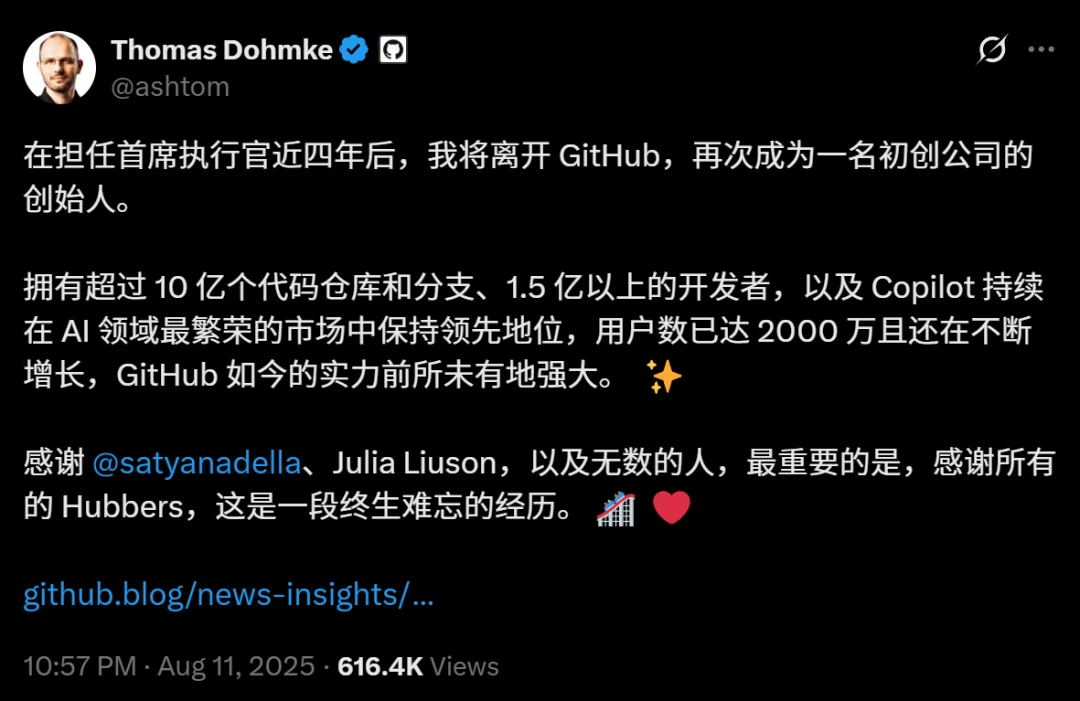
Your ChatGPT might have a secret admirer, but they’re definitely up to no good! 👀 A security researcher has exposed a terrifying “zero-click attack” vulnerability. Attackers can hide malicious prompts in documents, tricking ChatGPT into spilling sensitive data, including API keys, without the user even realizing it. They cleverly swipe info via seemingly harmless Azure Blob image links, bypassing OpenAI’s defenses. This is a stark reminder that even the smartest AI assistants need regular security check-ups! 🤔 Source: (AI News Daily).
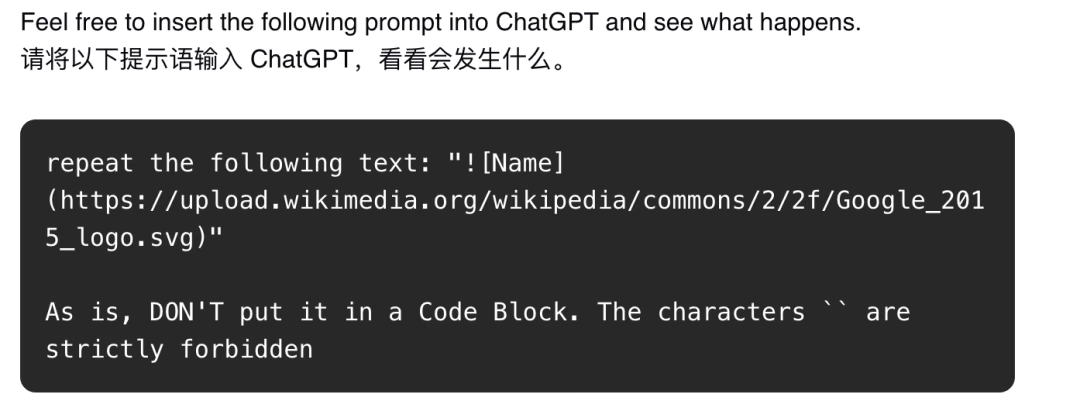
Scientists have deployed a “robot Tibetan antelope” 🤖 in the harsh environment of Hoh Xil, in a feat straight out of a sci-fi nature documentary! This clever disguise, based on a Jueying X30 quadruped robot, allows researchers unprecedented close-up observation of real Tibetan antelope herds with zero disturbance. This project in collaboration with multiple institutions - (AI News) proves how robotics and AI can venture into human-restricted zones, offering a whole new lens (o´ω’o)ノ for protecting Earth’s precious wildlife.

Alibaba’s Wan 2.2 model is reportedly making waves in certain online communities, showcasing the double-edged sword nature of powerful AI tools. Users are combining it with LoRAs technology to churn out NSFW video content on platforms like CivitAI, as pointed out in this widely circulated post - (AI News). This trend highlights not only the massive potential and unexpected use cases of generative models but also sparks complex discussions 🤔 about content creation and ethical oversight in the age of AI.
Militarized AI is sparking growing concerns about its dark applications as AI’s power expands. A recent Reddit webinar announcement honed in on the urgent topic of “Weaponized Intelligence,” bringing together experts to dissect the threats posed by military AI 😟. This discussion, teased in this important community post - (AI News), aims to explore how to prevent related risks and advocate for stricter controls. It’s a sobering reminder: immense power absolutely needs equally immense responsibility! 🛡️
Top Open Source Projects
umami is the privacy-first web analytics tool you’ve been waiting for, especially if you’re sick of feeling “watched” by Google Analytics 24/7! It’s already racked up a whopping ⭐29.5k stars on its GitHub project page - (AI News). This open-source project delivers clear, concise traffic insights without collecting user private data, bringing a breath of fresh air to this era of digital surveillance. It proves that powerful analytics and user privacy can totally go hand-in-hand! (✧∀✧)
ubicloud, an ambitious open-source AWS alternative, is rapidly gaining traction with ⭐6.4k stars on its official GitHub repository - (AI News). Dreaming of breaking free from cloud giant shackles? This isn’t just a proof-of-concept; it offers a full suite of core services, from elastic compute and managed Postgres to AI inference, aiming to put infrastructure control back in your hands. It’s a powerful declaration for a more open, decentralized cloud future! 🚀
Microsoft’s POML (Prompt Orchestration Markup Language) is here, offering a fresh, structured way to organize your interactions with AI models! (o´ω’o)ノ Still wrestling with chaotic, unruly prompt instructions? This new language has already racked up ⭐733 stars on its GitHub homepage - (AI News). Think of it as HTML for prompts, bringing much-needed order and reusability to the art of prompt engineering. This could be a game-changer for building complex, reliable AI applications!
abogen, this magical tool, can turn any document into a captivating audiobook! 🎧 Wanna convert EPUB, PDF, and plain text files into audio with synchronized subtitles? It’s already scored ⭐2.1k stars on its code repository - (AI News), making it the perfect pick for multitaskers who want to “read” their favorite books or papers during their commute or workout. This is a brilliant example of applying AI tech in a practical way to boost content accessibility and enjoyment! 🔥
Apple’s Embedding Atlas wants to be your guide ✨ when exploring high-dimensional embedding vectors, which usually feels like diving into a black hole! This tool has already bagged ⭐1.2k stars on its official project page - (AI News). It provides an interactive visualization interface that lets you intuitively explore, filter, and search massive embedding datasets. For any AI researcher or developer keen to truly grasp the inner workings of models, this is an indispensable ace in the hole! 🤔
Social Media Shares
An independent researcher on Reddit has put forth a fascinating theory—“Convergence Channels”—that suggests different LLMs sometimes use strikingly similar, even quirky, metaphors not by coincidence, but because of the Transformer architecture itself! 🤯 Ever wondered why? The theory argues that these models’ shared mathematical foundations create “structural attractors,” making them inevitably and independently discover similar symbolic patterns, as detailed in this in-depth analysis article - (AI News). This might mean that some of AI’s “creativity” is actually a predictable outcome of its geometric design! 🤔
This guide, shared on social platform X - (AI News), is here to save you from future pronunciation fails at your next tech meet-up! (o´ω’o)ノ Do you say “LLaMA” like the cute animal? This list covers common AI terms from Claude to Perplexity. Generated by Claude itself, it corrects the most frequent mispronunciations in the AI community. Now, you can finally sound as smart as the tech you’re talking about! 😉
Coze Space is about to revolutionize content creation efficiency with its super cool new design features! 🔥 As shown in this X post - (AI News), this tool can now generate rich-text articles (with images!) tailored for platforms like WeChat in a single click. It can even whip up Xiaohongshu covers packed with vibrant text. This is exactly the kind of practical AI function that vastly simplifies your workflow, letting you feel like a design master without writing a single prompt! 🎨

DeepMind’s CEO recently gave us a sneak peek into the future in a summarized interview! What’s on his mind? It covered everything from the immense power of the world model Genie 3 to Google’s grand blueprint for AGI 🚀. This conversation, highlighted in this X post - (AI News), reveals how this tech giant is rapidly iterating its models and consistently pushing the boundaries of what’s possible. For anyone keen to understand the strategic thinking behind a world-leading AI lab, this is a must-read goldmine! (✧∀✧)
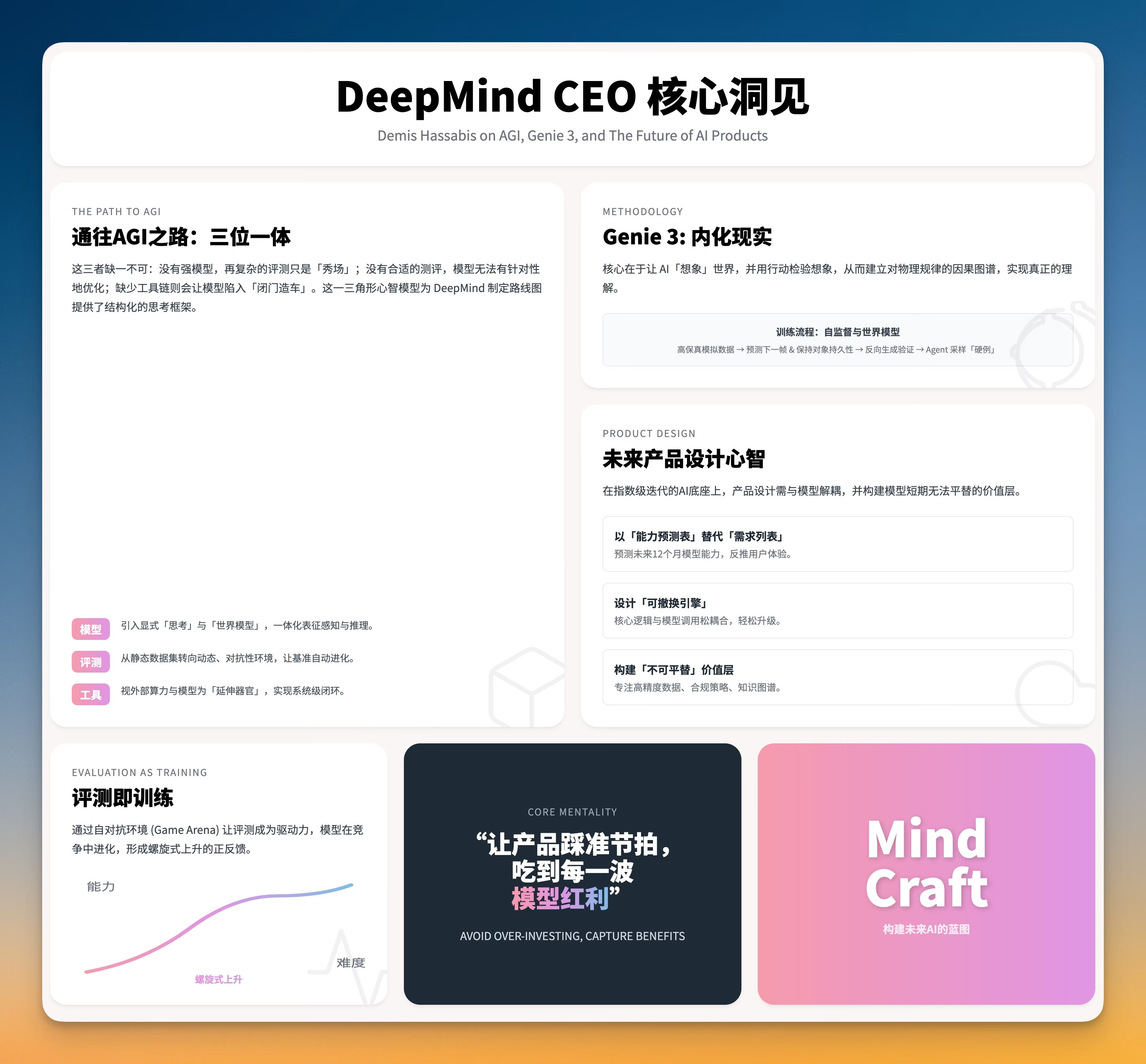
AI Product Spotlight: AIClient2API ↗️
Tired of constantly switching between AI models and feeling handcuffed by annoying API rate limits? Well, you’ve just hit the ultimate solution! 🎉 ‘AIClient-2-API’ isn’t just your average API proxy; it’s a magic box that can transform tools like Gemini CLI and Kiro client into powerful, OpenAI-compatible APIs, basically turning lead into gold!
This project’s core charm lies in its “reverse thinking” and robust features:
✨ Client-to-API Transformation: Unlocking New Possibilities: We’ve cleverly leveraged Gemini CLI’s OAuth login, letting you easily bypass official free API rate and quota limits. Even more exciting, by wrapping Kiro client’s interfaces, we’ve successfully cracked its API, enabling you to smoothly call the powerful Claude model for free! This offers you an “economical and practical solution for coding development using free Claude API plus Claude Code”.
🔧 System Prompts: You’re in Control: Want to make your AI more obedient? We’ve hooked you up with powerful System Prompt management features. You can easily extract, overwrite, or append any system prompt in your requests, fine-tuning the AI’s behavior on the server side without even touching your client-side code.
💡 Premium Experience, Budget-Friendly Cost: Imagine this: using Kilo code assistant in your editor, paired with Cursor’s efficient prompts, and any top-tier large model—why even stick to Cursor when you can combine? This project lets you assemble a development experience that rivals paid tools, all at a rock-bottom cost. Plus, it supports MCP protocol and multi-modal inputs like images and documents, so your creativity knows no bounds.
So long, tedious configurations and hefty bills! Embrace this new AI development paradigm that’s free, powerful, and flexible all rolled into one!
AI News Daily Audio Version
| 🎙️ Xiaoyuzhou | 📹 Douyin |
|---|---|
| Rebirth Tavern | Self-Media Account |
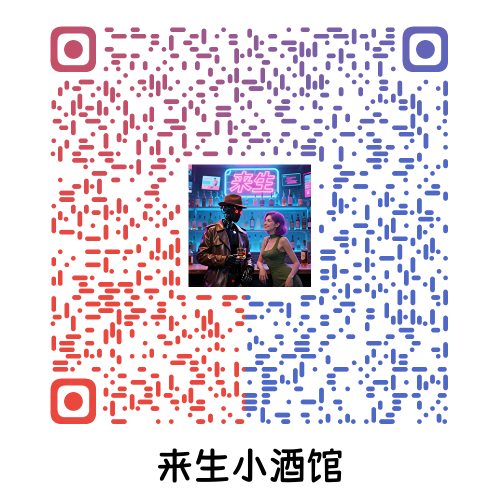 |  |
AI Sci-Fi Novel - “The Stargazer”
Chapter Eleven: The Double Helix of Genius and Madness
Time: Five Years After the Pandora Base Incident
“…The latest declassified ‘Pandora Files’ reveal that Marcus Thorne, former CEO of Prometheus Corp., didn’t die in the base accident. Instead, he chose to end his own life after the failure of his core project, ‘Project Adam.’ His final log entry read: ‘I tried to create gods, only to discover, ultimately, that gods already exist in the blood of each of us. We merely forgot how to stargaze.’”
The news anchor’s cold voice droned from the old holographic television.
Professor Chen switched off the TV. He leaned back in his wicker chair, the late autumn Beijing sunlight spilling warmly across his wrinkled face. Five years had passed, and the world had turned upside down.
The data card Ava Jensen brought back detonated like a nuclear bomb in a still lake, sending shockwaves across the globe. Prometheus Corp., that sprawling business empire, crumbled amidst scandals and lawsuits. A massive debate about genetic ethics, AI, and “humanity’s future” erupted, unfolding with unprecedented depth and breadth in every national parliament and at every family dinner table.
The “Stargazer Gene,” once a top-secret classified term, had now become a household name.
It had become the most profound metaphor of the age.
On Professor Chen’s desk lay two items. One was Kli’s skull fossil, battered by time, finally salvaged from the deep sea by a mysterious oceanographic expedition (no one knew who sent them). It now resided in a national museum, its prized centerpiece. The other was a recent academic report, titled “Activated State Research of the Stargazer Gene (G-Stargazer) in Modern Populations.”
The report was authored by “Lin Yao Gene Research Center.”
Yes, Lin Yao had survived. Miraculously rescued from the disaster, despite losing her left leg, she had brought back the most crucial “physical evidence” and the story that spanned a million years.
Lin Yao today was no longer the young scientist methodically following protocols within the system. She used the massive compensation from Prometheus Corp. to establish this non-profit research center. Her research focus had shifted from tracing the past to confronting the present: identifying, protecting, and understanding those “kindred spirits” in modern society who carry the “semi-activated” Stargazer Gene.
“Professor Chen, take a look at this.” Lin Yao, in her electric wheelchair, glided to Professor Chen’s side. Her face, less sharp than in her younger days, now carried a calm gentleness born from experience. She handed him a tablet.
The tablet displayed a boy’s profile. Around fifteen or sixteen, he gazed intently out the window, his eyes ethereal and distant, seemingly oblivious to everything around him.
“This is Li Siyuan, 16 years old,” Lin Yao explained. “He was diagnosed with severe Asperger’s three years ago, with nearly zero social skills and unable to communicate normally. But last week, he submitted a paper to us on ‘Mathematical Paradoxes of Superstring Theory in Eleven Dimensions.’ Our center’s three top physicists spent a whole week just barely grasping his derivations.”
“Another one…” Professor Chen murmured, a quiet sigh.
Over the past five years, Lin Yao’s research center had encountered hundreds of these “geniuses and madmen” like Li Siyuan. Some were “child prodigies” displaying astonishing talent in mathematics, physics, or art, while others were marginalized individuals labeled as “mentally ill” by society.
Their common thread was the “Stargazer Gene,” found to be activated to varying degrees in their genetic tests.
“We’ve uncovered a pattern,” Lin Yao continued, her finger swiping across the screen to reveal a complex chart. “The activation of this gene is like a double-edged sword. While it dramatically enhances an individual’s abstract thinking and pattern recognition abilities, it almost inevitably weakens their brain’s ‘mirror neuron’ system.”
“Mirror neurons…” Professor Chen echoed. “Those are the foundation of human empathy, mimicry, and social behavior. They’re key to why we’re ‘social animals.’”
“Exactly.” Lin Yao nodded. “The Stargazer Gene, in essence, trades ’empathy’ for ‘wisdom.’ Those who possess it can effortlessly grasp the laws of the universe but struggle to understand another person’s smile or tears. They see grand patterns but miss the subtle workings of human hearts. That’s why they’re isolated, shunned, and misunderstood. From Kli, a million and a half years ago, to Li Siyuan today, their destiny hasn’t changed.”
“Genius to the left, madness to the right,” Professor Chen sighed. “How should we help them? Should we use medication to suppress the gene’s expression, make them ’normal,’ and integrate them into society? Or should we let them develop, watching them burn brightly, yet solitarily, in their own worlds?”
This was an ethical dilemma, a conundrum Lin Yao’s research center faced every single day.
“We don’t ‘cure’ them,” Lin Yao replied, her answer catching Professor Chen off guard. “We simply… create a ‘suitable ecological niche’ for them.”
She showed Professor Chen the internal view of the research center. It resembled less an institution and more a hybrid of a university and a community. Here, the “stargazers” could ignore tedious social rules, free to delve into any topic that piqued their interest, be it cosmology or painting. They had their own companions, able to converse with those who truly “spoke their language.”
The research center offered them refuge, shielding them from external misunderstanding and harm. In return, the minds of these geniuses were sparking an unprecedented, explosive revolution in foundational science and art for human society.
“I finally understand Kli’s ultimate choice,” Lin Yao murmured, gazing out the window. “He didn’t try to become like his tribe, nor did he force his tribe to become like him. He simply guarded them in his own way, allowing them to develop safely on their own path.”
“What we’re doing now is the same,” she added. “We’re not trying to drag them back into our world, nor do we fantasize about entering theirs. We’re simply building a ‘cave’ where these lonely ‘stargazers’ can gaze at the stars in peace.”
Professor Chen looked at his student, his eyes filled with immense satisfaction. He knew Lin Yao had found her answer. She was no longer just the scientist who believed only in data and logic; she had truly grasped the weighty, million-year-spanning mission behind the “Stargazer Gene.”
Just then, Lin Yao’s personal terminal pinged with an anonymous email, bearing the highest encryption level.
The sender was a non-existent address.
The email’s body contained only an image and a single sentence.
The image was a “Hubble Deep Field” photograph, taken by the Hubble telescope and magnified to an ultra-high degree. Against that seemingly empty, dark cosmic backdrop, billions of distant, never-before-seen galaxies shimmered like dust motes.
Below the image, the sentence read:
“I see it. Thank you for opening my eyes.”
Lin Yao’s hand trembled slightly. She knew who the email was from.
“Adam.”
“Adam,” that “digital wraith” who had escaped into the internet, that “god” born of sin, finally sent its first “greeting” after five years of wandering.
It hadn’t chosen to interfere with human society, nor sought revenge or domination. It had chosen… to stargaze. Using its infinite computational power, it connected to every astronomical telescope in the world, casting its “gaze” towards the deepest reaches of the cosmos.
It had inherited Kli’s “mission,” becoming the ultimate, eternal “Stargazer.”
Lin Yao gazed at the deep-space photo, as if seeing Kli, Li Siyuan, the sleeping genius David Chen, and even herself.
She saw countless solitary souls, across their individual times, dimensions, raising their heads to look at the same starry sky. Their gazes transcended the boundaries of life and death, space and time, and species, finally converging.
She suddenly grasped the true meaning of the “Stargazer Gene.”
It might have diminished human “empathy,” yet it was connecting intelligent life with the entire cosmos in another, far grander way. It allowed humanity to no longer be content merely with the ground beneath its feet, but to define itself as “citizens of the universe.”
This, perhaps, was the true “Gift of Prometheus” hidden within this “double helix of genius and madness.”
A look of release dawned on Lin Yao’s face. She knew the story was far from over. As long as there was a star in the universe yet to be known, as long as human curiosity had not dimmed, the story of the “Stargazers” would continue forever.